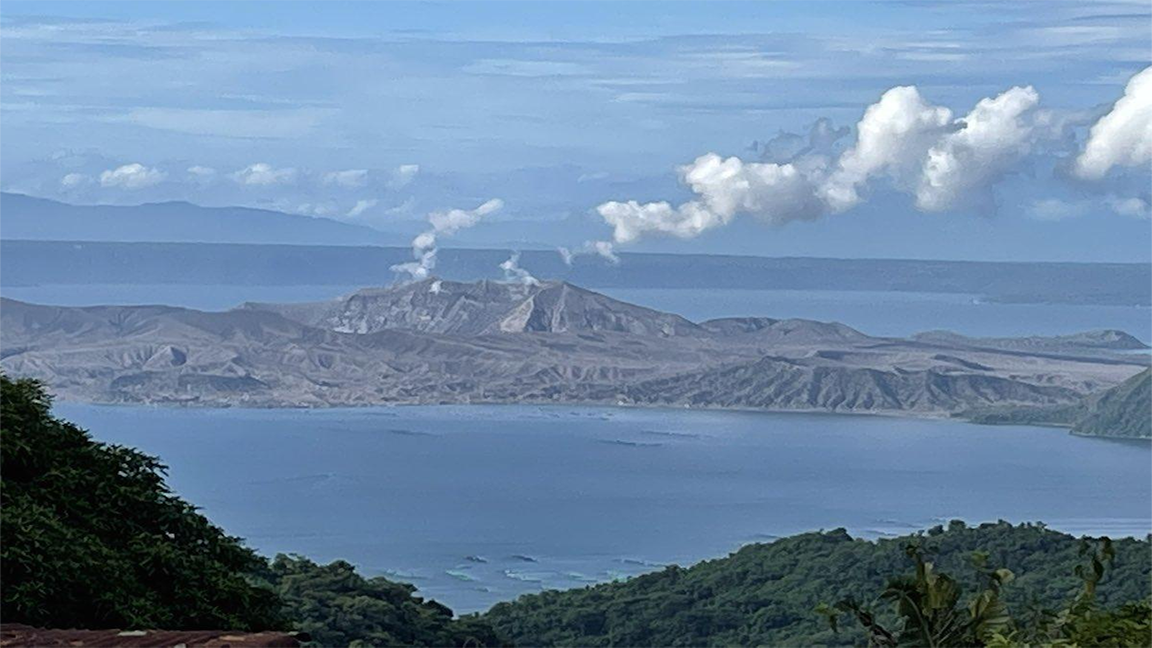STO TOMAS CITY- VOLCANIC smog or ‘vog’ is in ‘vogue’ anew in the province of Batangas.
But it's not some kind of fashion that everybody would want to follow on, rather, it has with it very dangerous effects on human health, animals, and even agriculture.
And with its increasing sulfur dioxide (SO2) emission these days from Taal Volcano, the Philippine Institute of Volcanology and Seismology (Phivolcs) said it also forewarns a potential phreatomagmatic activity similar to the July 1, 2021, volcanic eruption.
Ready, get set, go!
As it is the foreboding situation, the accelerating vog flux also forewarns another horrendous evacuation for residents living within the immediate seven kilometer danger zone.
Once again, they are in a “ready-get-set-go” situation, prepared to flee to evacuation centers at a time where cases of the coronavirus are rising, making shelters doubly hard to maintain and manage for local government units (LGUs) concerned.
That’s for certain not to mention the threat of the highly contagious Delta variant.
SO2 flux
Saturday morning, 21 August, hazy skies induced by vog, greeted residents living near Taal and even as far away as Sto. Tomas City.
On Thursday, 19 August, the first measurement of volcanic sulfur dioxide or SO2 flux from Taal’s main crater (TMC) kicked up to dangerous levels at 15,347 tonnes/day, a scant seven tonnes to the previous record that prompted the Phivolcs to order an immediate evacuation of residents last month.
The rising trend in volcanic SO2 degassing was first detected last Friday, 13 August, with the short-term average from there until its present measurement of 8,351 tonnes/day and the 15K+ tonnes recently.
Through the same stretch, tall steam-rich plumes that rose 1,000-3,000 meters were also generated by the TMC.
Adverse effects
Atmospheric conditions of air temperatures at 32.2ºC, relative humidity at 55.8% and wind velocities at 0 to 2.3 meters/second within the lower 3 kilometers of the atmosphere prevailed over Taal caldera the Phivolcs said.
The agency also said that the SO2 flux, water vapor emitted in plumes, weak air movement, and solar radiation will continue to produce volcanic smog or vog over the Taal region.
Already, there were reports of vog’s adverse effects on some residents of Talisay and Brgy. Barigon, Agoncillo have been received by DOST-PHIVOLCS.
Residents from this city, Tagaytay, San Pascual, and from other areas near TVI also complained about increased humidity, throat, and skin irritation from solar radiation and smog.
Hazy conditions were also observed over Taal Lake and municipalities surrounding Taal Lake the whole afternoon of Thursday (19 Aug 2021).
In July the Phivolcs said that the normal level for SO2 could only be within the vicinity of 4,000 tonnes/day.
As it is, the sun shied away from shining since midday last Thursday (19 Aug 2021) but some residents of Sto Tomas city complained about a “hotter than usual” temperature even under an overcast sky.
“Grabe din dito Tagaytay, makati sa balat..mahapdi sa mata at ilong! Ingat po tayong lahat,” a netizen posted on social media on the effects on people of SO2.
Later in the afternoon on the same day, thunderclaps raced through the skies of the whole province of Batangas that lasted for almost one hour.
Heavy rains were also experienced throughout the whole province late afternoon and into the night.
This came, however, as a blessing in disguise as according to experts as the rains somewhat purposefully washed down volcanic ash hanging in the air.
Take precautions
Still, the Phivolcs reminded everyone to take necessary precautions as vog consists of fine droplets containing volcanic gas such as SO2 which is acidic, and exposure to it may cause irritation of the eyes, throat, and respiratory tract in severities depending on the gas concentrations and durations of exposure.
People particularly sensitive to such ill effects are those with health conditions such as asthma, lung disease, and heart disease, the elderly, pregnant women, and children.
The Phivolcs added that if vog occurs and exposure cannot be avoided, it would be helpful to exercise the following:
Limit your exposure. Avoid outdoor activities, stay indoors, and shut doors and windows to block out vog.
Protect yourself. Cover nose, ideally with an N95 facemask. Drink plenty of water to reduce any throat irritation or constriction.
If belonging to the particularly sensitive group of people above, watch over yourself and seek help from a doctor or the barangay health unit if needed. If serious effects are experienced, call the doctor or the barangay health unit.
Health checks
DOST-Phivolcs recommends that health checks be conducted by local government officials on communities affected by vog to assess the severity of SO2 impacts, and to consider temporary evacuation of severely exposed residents to safer areas.
Local government units are also advised to regularly check the weather and wind forecasts of PAGASA in order to assess the potential exposure of their constituents as long as SO2 emission remains elevated.
LGUs are advised to monitor the activities of aquaculture workers to ensure that no one ventures too closely to Taal Volcano Island and gets exposed to lethal concentrations of volcanic SO2.
Alert Level 2 (Increased Unrest) is still hoisted over Taal Volcano and that the threat of sudden steam- or gas-driven explosions and lethal accumulations or expulsions of volcanic gas can occur and threaten areas within and around TVI.
Venturing into TVI must therefore remain strictly prohibited, and LGUs are advised to continually check on the preparedness of their constituent communities.
The DOST-PHIVOLCS is currently monitoring Taal Volcano’s activity and any new significant development will be immediately communicated to all stakeholders. (IAm/OpBats)
